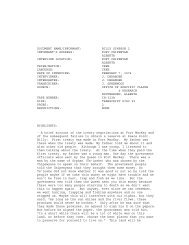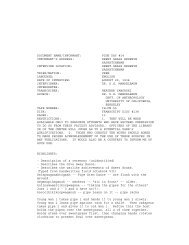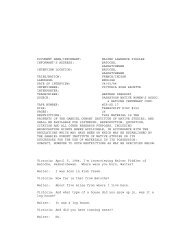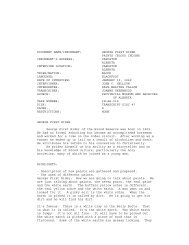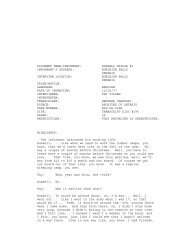Contents of It's not All in Your Head by Asmundson and Taylor
Contents of It's not All in Your Head by Asmundson and Taylor
Contents of It's not All in Your Head by Asmundson and Taylor
You also want an ePaper? Increase the reach of your titles
YUMPU automatically turns print PDFs into web optimized ePapers that Google loves.
treatment participants would have only read the psychoeducational <strong>in</strong>formation about<br />
health anxiety <strong>and</strong> apparently that was enough to <strong>in</strong>itiate some decreases <strong>in</strong> health<br />
anxiety, reassurance seek<strong>in</strong>g, preoccupation with body sensations, <strong>and</strong> depression.<br />
However, because power was so low the confidence <strong>in</strong> these f<strong>in</strong>d<strong>in</strong>g is limited.<br />
Half <strong>of</strong> the SHB participants (n = 5) received <strong>in</strong>-person check-<strong>in</strong>s with facilitators<br />
<strong>and</strong> were given the entire self-help book at the beg<strong>in</strong>n<strong>in</strong>g <strong>of</strong> treatment. The rema<strong>in</strong><strong>in</strong>g 5<br />
received telephone check-<strong>in</strong>s with the <strong>Head</strong> Researcher <strong>and</strong> were mailed Part 1, Part 2,<br />
<strong>and</strong> Part 3 <strong>of</strong> the self-help book separately. Although <strong>in</strong>dependent samples t- tests had<br />
non-significant results, the small sample size made the results uncerta<strong>in</strong> <strong>and</strong> open to Type<br />
II error (i.e., report<strong>in</strong>g that there were no differences when there actually were<br />
differences). Therefore, it could <strong>not</strong> be determ<strong>in</strong>ed statistically if check-<strong>in</strong> format had an<br />
effect on treatment results.<br />
3.1.4. SHB <strong>and</strong> WLC between-group comparisons<br />
There were almost no differences between the SHB <strong>and</strong> WLC groups on the<br />
primary <strong>and</strong> secondary measures at T1 (see Table 5). The one exception was that the<br />
WLC group had higher scores on the SF-36 MCS than the SHB group (t = -3.06, df = 12,<br />
p = .005; power = .99 [high power]). This suggests the WLC group believed they had<br />
better mental health at T1 than the SHB group. The absence <strong>of</strong> other significant<br />
differences may have occurred because <strong>of</strong> the small sample size <strong>and</strong> lack <strong>of</strong> statistical<br />
power. This makes it uncerta<strong>in</strong> whether or <strong>not</strong> the two groups were equivalent at T1.<br />
60



